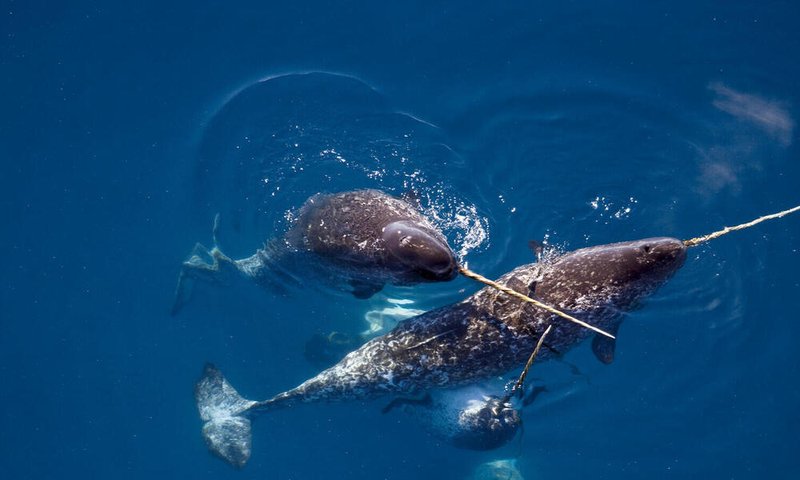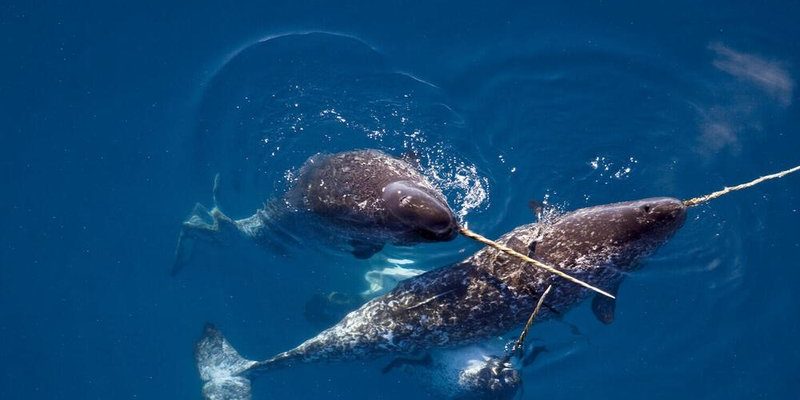
As we get into the nitty-gritty of narwhals and their conservation status, you’ll see that these quirky whales are more than just a pretty face. They live in some of the most remote Arctic waters, making them vulnerable to climate change, hunting, and other human impacts. So, grab a cup of coffee, and let’s explore the current state of narwhals and what’s being done to protect them.
Understanding Narwhals and Their Habitat
Narwhals are primarily found in the Arctic waters around Greenland, Canada, and Russia. They thrive in icy environments, often found in areas covered with ice, which makes spotting them challenging. Picture them gliding gracefully through frigid waters, their long tusks piercing the surface like spears. The fact that they can dive deeper than 1,500 meters (about 4,900 feet) helps them escape predators like orcas.
These whales typically form groups of 15 to 20 individuals, although larger pods can be spotted during the summer months. They communicate using a series of clicks and whistles, almost like a secret underwater language. But with the melting ice due to climate change, their habitat is shifting, and this delicate balance is being disrupted.
You might be wondering how their environment affects their survival. As the Arctic ice diminishes, narwhals face challenges finding food. Their main diet consists of fish, squid, and shrimp, which are becoming harder to locate. If these food sources dwindle, narwhals will struggle to thrive.
Current Conservation Status of Narwhals
So, are narwhals endangered? According to the International Union for Conservation of Nature (IUCN), narwhals are currently listed as “Near Threatened.” This means they’re not immediately at risk of extinction, but if current threats continue, they could move to a higher risk category. The primary pressures on narwhals include climate change, hunting, and increased human activities in their habitat.
Climate change is probably the most significant threat. As temperatures rise, sea ice diminishes, which not only affects narwhal food sources but also exposes them to increased shipping traffic and potential oil exploration. The situation is concerning, as more human activity in the Arctic could lead to habitat degradation.
Moreover, hunting still poses a risk, particularly in Greenland, where they are hunted for meat and tusks. Though regulated, hunting practices can still impact their populations. With the combination of these threats, narwhals are indeed living on the edge.
Climate Change and Its Impact on Narwhals
Let’s dive deeper into climate change—this isn’t just a buzzword; it’s a real force affecting narwhals. The warming climate leads to melting sea ice, which is crucial for narwhals. This ice helps keep them safe from predators and serves as a platform for resting or breeding.
With reduced ice cover, narwhals are forced to adapt. They may have to swim further in search of food or change their migratory patterns. Imagine navigating a maze that keeps shifting—it’s tough! These adaptations can lead to increased stress and decreased reproduction rates.
Moreover, warmer waters invite new species into the Arctic environment, altering food webs. For example, as the ocean warms, species that narwhals rely on for food may migrate or decline, leading to food scarcity. The ripple effects of climate change are complex, and narwhals are right in the middle of it.
Conservation Efforts in Action
Fortunately, conservation efforts are underway to protect narwhals and their habitat. Organizations like the World Wildlife Fund (WWF) and local governments are actively involved in monitoring narwhal populations and advocating for sustainable practices in the Arctic.
One significant step is the creation of marine protected areas (MPAs) that restrict certain activities, like fishing and oil drilling, in key habitats. By establishing these safe zones, we can help mitigate human impact and give narwhals a fighting chance.
Additionally, researchers are studying narwhal behavior and migratory patterns to better understand their needs. This data is vital for creating effective conservation strategies. The more we know about how narwhals interact with their environment, the better equipped we’ll be to protect them.
The Role of Indigenous Communities in Conservation
Indigenous communities play a crucial role in narwhal conservation. For centuries, these groups have coexisted with narwhals, relying on them for food and cultural practices. Their traditional knowledge of the land and sea provides invaluable insights into narwhal behavior and habitat needs.
Collaborative efforts between conservationists and Indigenous peoples are becoming more common. By combining scientific research with Indigenous wisdom, we can develop better approaches to protect narwhals and their ecosystems. It’s a partnership that respects both nature and culture.
Furthermore, educating Indigenous youth about conservation efforts fosters a sense of stewardship. When local communities engage in protecting narwhals, they empower the next generation to continue these efforts.
What You Can Do to Help Narwhals
You might be thinking, “What can I do to help narwhals?” Every small action counts! Here are some steps you can take to support their conservation:
- Educate yourself: The more you understand about narwhals and their environment, the better you can advocate for them.
- Support conservation organizations: Donations to groups working to protect narwhals can have a direct impact.
- Spread the word: Share information about narwhals and their challenges on social media or in conversations.
- Choose sustainable products: Be mindful of your purchasing decisions and opt for sustainable options to reduce your environmental footprint.
Every bit helps, and by spreading awareness, you can contribute to the ongoing fight for narwhal conservation.
Narwhals, with their intriguing tusks and enchanting Arctic homes, face numerous challenges in today’s changing world. While they are currently classified as “Near Threatened,” the threats they encounter—from climate change to hunting—could make their situation precarious if action isn’t taken.
Conservation efforts are crucial, and every one of us has a role to play. By staying informed, supporting initiatives, and engaging with Indigenous communities, we can contribute to protecting these magnificent creatures. Let’s work together to ensure that the “unicorns of the sea” continue to grace our oceans for generations to come.

